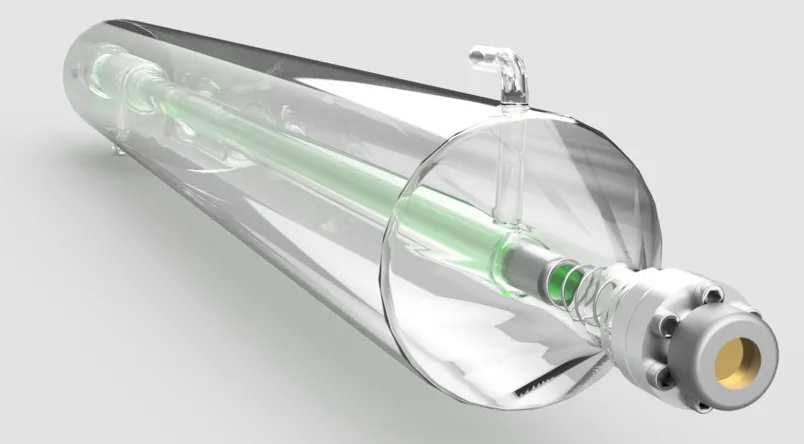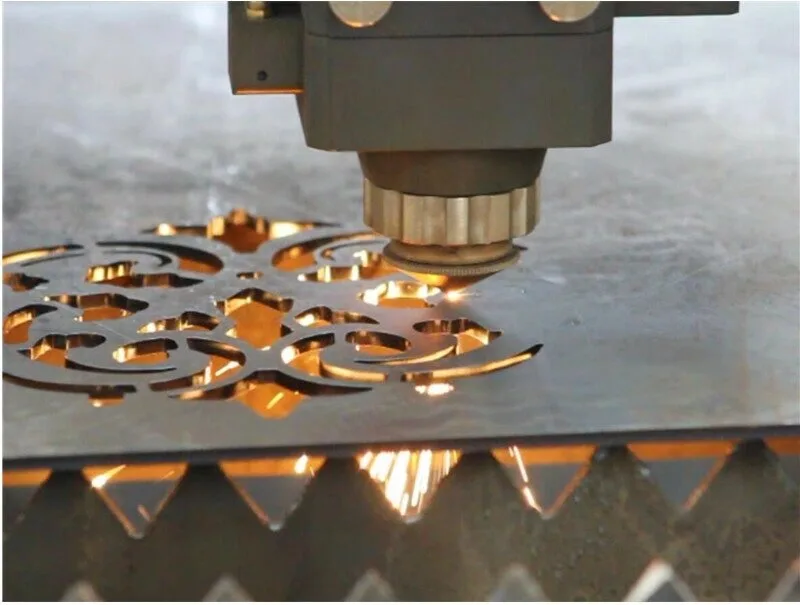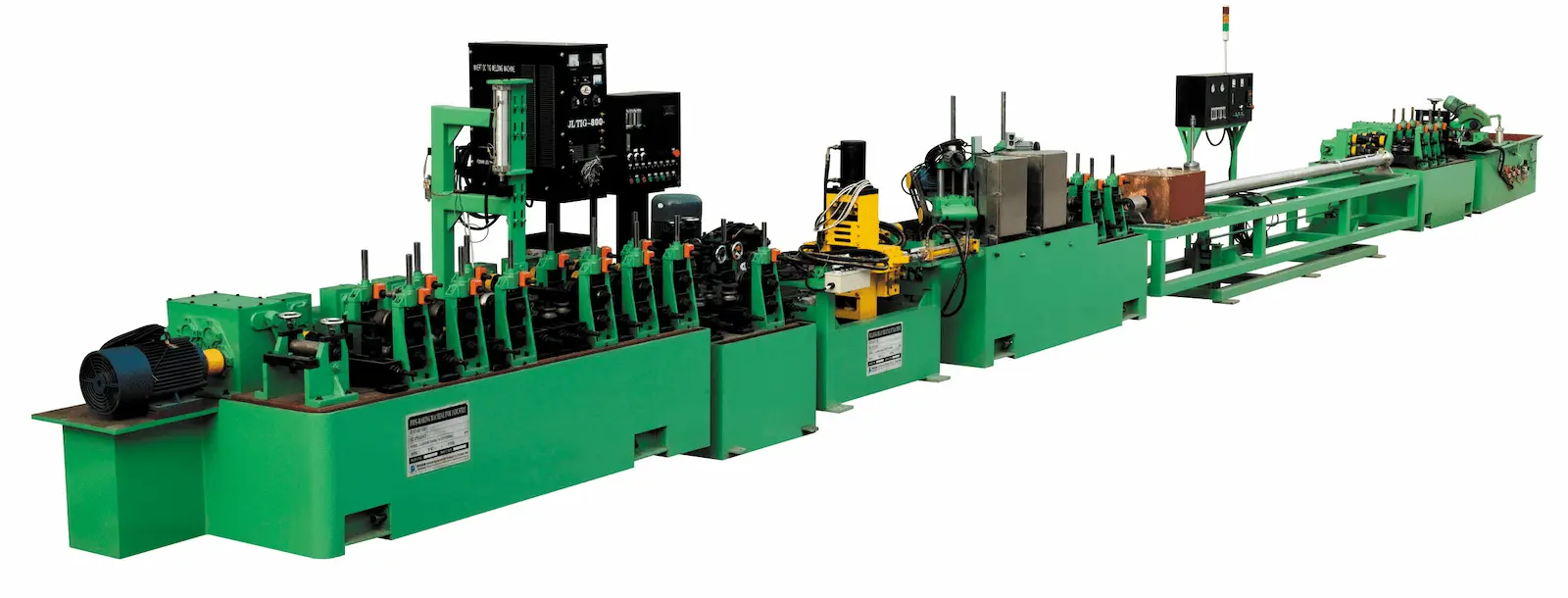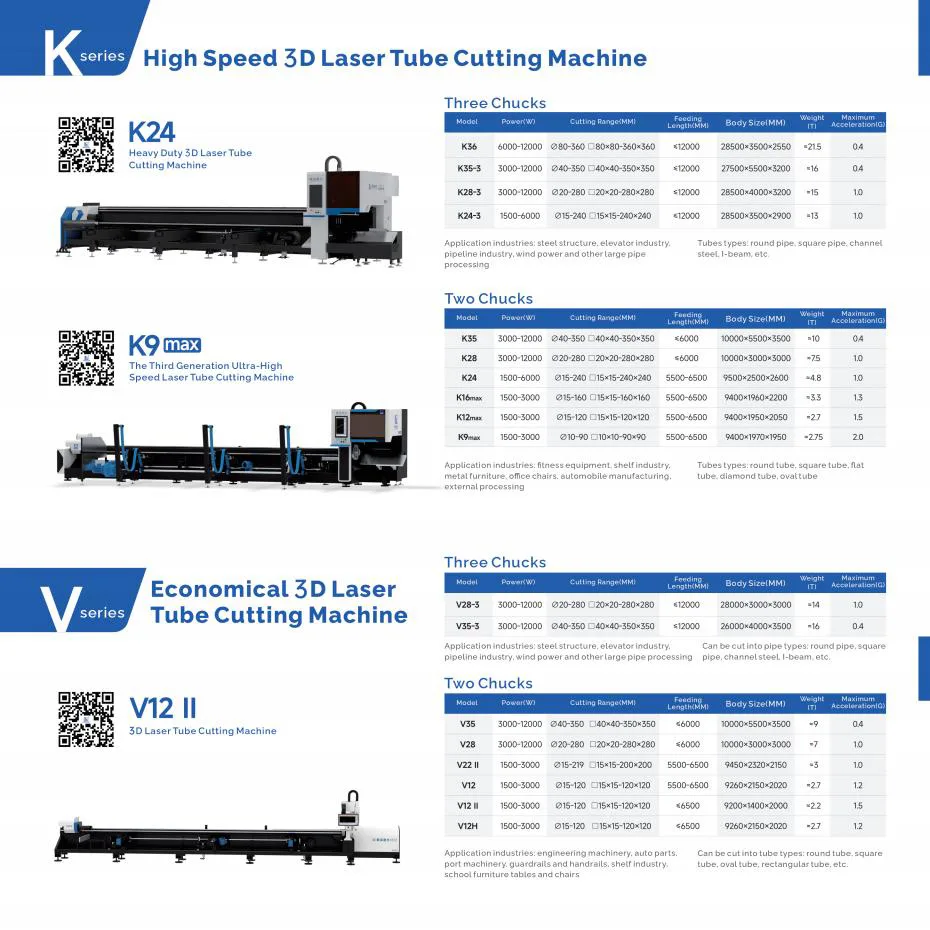In the past, increasing laser power was seen as the most direct and effective way to improve processing efficiency. However, after the release of the 60,000-watt laser cutting machine, the industry has started a discussion on whether power has reached its limit.
Industry experts believe that 60,000 watts already have the capacity to comprehensively replace plasma and flame cutting. Further increases in power do not contribute much to cutting efficiency and capability, but will instead increase user costs and energy consumption. However, the pursuit of efficiency in the industrial field is endless. If power has reached its ceiling, what other ways can be used to improve processing efficiency?
Introducing carbon fiber crossbeams to double the acceleration
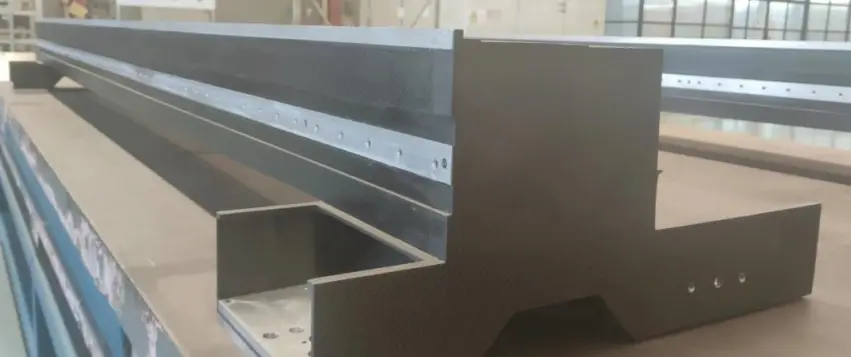
It is well known that the crossbeam is one of the key components of a gantry-type machine tool. The static and dynamic characteristics of the crossbeam determine the overall performance of the machine tool, and have an important impact on the processing efficiency, accuracy, and stability of the machine tool. Currently, machine tool crossbeams are made of metals, mainly steel and aluminum alloy castings.
Steel crossbeams have the advantages of good stability and high precision, but their high weight is usually applied to machine tools with low speed requirements. To achieve high speed and high acceleration, the motors need to be matched with very large power and torque. When the dynamic characteristics exceed the limit, it is impossible to further improve the performance. To reduce the weight of the crossbeam, people have started to use aluminum alloy crossbeams, but the weight of aluminum beams is still too large, and the improvement in speed and acceleration is limited. Aluminum alloy materials also have low modulus, are soft, prone to deformation, and have a large thermal expansion coefficient, so the accuracy is easily affected by temperature changes. Therefore, aluminum alloy crossbeams often need to be re-adjusted every 3-6 months.
| Item | Carbon steel | Aluminum alloy | Carbon fiber |
| Strength comparison | 1 | 2 | 6 |
| Rigidity comparison | 1 | 1.5 | 4 |
| Tensile Strength (Mpa) | 400-800 | 260 | 1700 |
| Stretch film amount | 210 | 69 | 120 |
| Yield Strength | 340 | 110 | — |
| Density | 7.8 | 2.5 | 1.55 |
| Thermal expansion coefficient(x10^-7) | 12 | 25 | 4 |
How to improve the processing efficiency of machine tools without stacking laser power?
The weight of a carbon fiber crossbeam is 1/4 to 1/5 of a steel one, and 1/2 to 1/3 of an aluminum alloy one. This lightweight material makes it possible to further increase the moving speed and acceleration of the machine tool. Some laser machinery manufacturers have introduced carbon fiber crossbeams, increasing the acceleration from the usual 0.8g-1g in precision cutting machines to 2g, while also improving the precision from the micron level to the sub-micron level.
Can carbon fiber crossbeams also reduce costs?
In addition to speed improvement, carbon fiber crossbeams can also reduce the overall cost of the machine. Due to their lightweight, carbon fiber crossbeams have small inertia, greatly reducing the requirements for the gear rack and motors. This also allows the machine bed to be lightened. As mentioned earlier, to achieve high speed and high acceleration, steel beams and aluminum beams require motors with very large power and torque. But with carbon fiber crossbeams, the costs of the bed, gear rack, and motors can be effectively reduced while maintaining the same acceleration performance. Ordinary motors can also achieve 1g acceleration, and the precision can be greatly improved.
Furthermore, higher speed and acceleration are the eternal pursuit of the industrial field. If steel beams or aluminum beams are used, improving acceleration often sacrifices precision, and improving precision often sacrifices acceleration. The two are difficult to achieve simultaneously. To simultaneously improve precision and acceleration, it would require the purchase of much more powerful motors, gear racks, etc., and the increased costs may even exceed the value created for the user, who would not be willing to pay for it.
Carbon fiber crossbeams greatly increase the probability of successfully improving acceleration, and the cost is also much lower than steel beams or aluminum beams. Therefore, some manufacturers have fully adopted carbon fiber crossbeams and completely abandoned metal crossbeams.
For end users, carbon fiber crossbeams can also significantly reduce costs. When the machine tool acceleration is increased from 1g to 2g, it means that the user only needs to spend a little more than before to buy one machine, but can achieve the effect of buying two machines in the past, greatly improving the value of the entire machine. At the same time, the lighter crossbeam also means that the guide rails and gear racks that bear the main moving loads will wear out less, greatly extending their service life and the service life of the equipment.
It is worth mentioning that the forming process of metal crossbeams is hot processing, and a large amount of machining will form residual stress inside the metal, which will gradually release over time, causing the crossbeam to warp and bend, affecting the precision of the equipment. Even repeated heat treatment cannot eliminate this. Aluminum alloy crossbeams are also soft and prone to deformation, requiring frequent adjustments by after-sales personnel to ensure the precision of the equipment. The heavy crossbeams can also cause motor overheating (even burnout) during long-term operation, which will bring huge after-sales costs to the company and cause users to stop production for repairs.
Carbon fiber is mainly composed of carbon, a brittle inorganic material with little plastic deformation and an elongation at break of only about 2%. Carbon fiber composite materials do not creep or fatigue after shaping, and can maintain high precision for a long time without the need for repeated adjustments by after-sales personnel. The lighter carbon fiber crossbeam also causes less loss to the motor, and almost no motor overheating will occur. Therefore, carbon fiber crossbeams can help companies save after-sales costs and help users avoid frequent downtime.
However, after the increase in laser power, the speed is often unable to keep up when cutting complex patterns or small patterns, and the speed advantage of ultra-high power can only be exerted on relatively long and directionally consistent straight lines or arcs. With the improvement of industrial design, the machining objects of machine tools are becoming more curved and refined, and the patterns are becoming more complex, so high power cannot comprehensively improve the processing efficiency. The key is still in the acceleration and speed of the motion axes (with the acceleration of the crossbeam being the most critical and difficult to achieve).
The heavier steel crossbeams make it easy to cause vibration when trying to increase acceleration, limiting performance improvements. Aluminum crossbeams are lighter in weight, but the material is soft and lacks rigidity, and vibration during acceleration also limits performance improvements. Carbon fiber crossbeams are lightweight, have rigidity close to steel, and have much greater damping of vibration propagation in the material than metal materials, which is beneficial for reducing vibration during motion. Therefore, carbon fiber crossbeams can significantly improve the dynamic performance of high-power cutting machine tools.
Damage resistance characteristics of carbon fiber crossbeams
Gantry-type crossbeams often use dual-side motor numerical control synchronous drive. When encountering control system failures or external collisions, the two-side drive motors may become out of sync, causing jamming and severe twisting deformation of the crossbeam. Since metal materials undergo plastic deformation, once a large deformation occurs, it will be a permanent deformation that cannot be restored to the original state, and the machine tool will be forced to stop until the crossbeam is replaced.
However, carbon fiber has no plastic deformation. Therefore, even if the material undergoes large deformation due to a large external force, as long as there is no internal damage, the carbon fiber composite material can spring back to its original state without permanent deformation after the force is removed. This characteristic is far superior to metal materials, which is why carbon fiber composite materials are also used for elastic components (such as vibration table spring plates) with durable and stable elasticity that does not deteriorate. When used on high-speed machine tools, even if serious accidents such as collisions or unbalanced two-side drive jamming occur, causing deformation of the crossbeam, the precision can be maintained after the accident is resolved, as the crossbeam can return to its original state.
